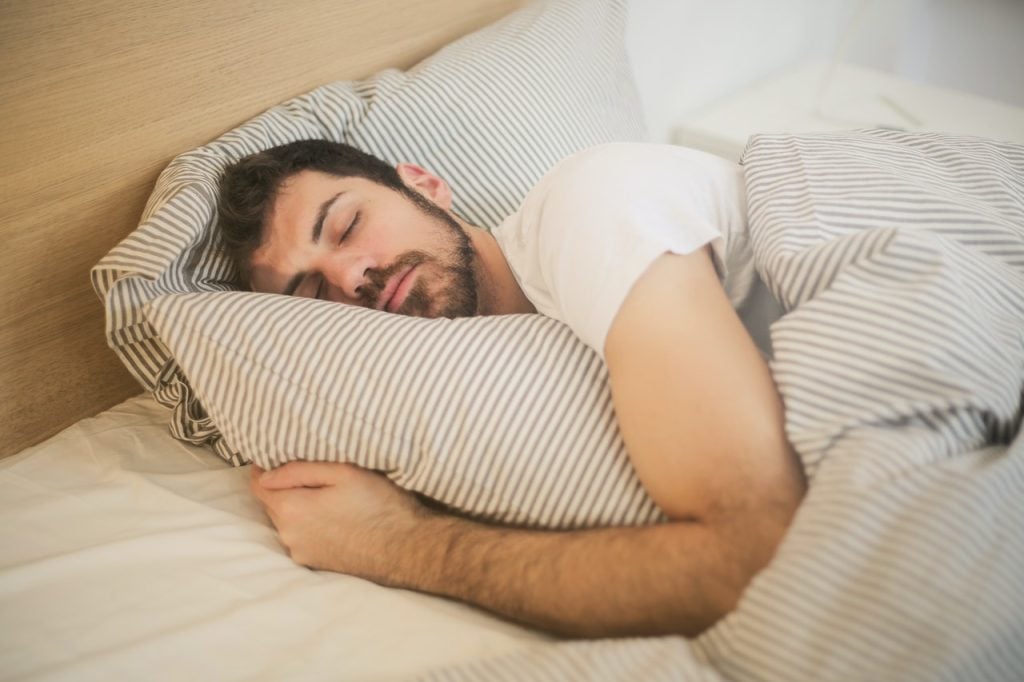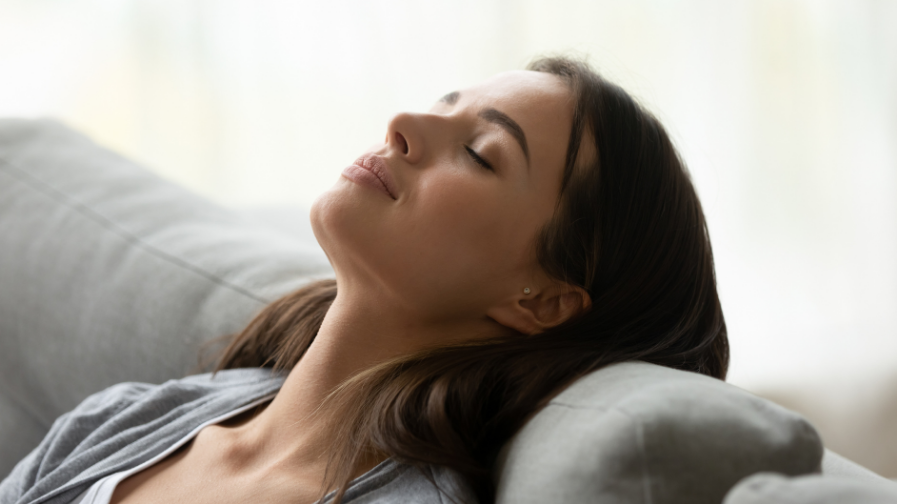
As one of the most common conditions associated with sleep, sleep apnoea has received a lot of attention from doctors and medical researchers. Cases can be mild or severe, but there is one shared problem across the board: discomfort.
No matter how old you are or what your physical health looks like, sleep apnoea can be a real problem for both sufferers and loved ones.
So, to help you better understand sleep apnoea, we at Mattressman have done the research to point out how to identify and potentially treat this widespread sleeping condition.

Characterised by loud, continuous bouts of snoring, sleep apnoea is a sleep disorder that causes breathing to intermittently stop and start throughout the night. The British Lung Foundation estimates that around 1.5 million people in the UK are living with some form of sleep apnoea, with just under half of those cases believed to be in the moderate to severe category.
Read more: Common Sleep Disorders Explained
There are three types of sleep apnoea, each one posing its characteristics and health risks:
By far the most common type of sleep apnoea is Obstructive Sleep Apnoea (OSA). During OSA, the muscles at the back of the throat become too relaxed. This leads to them collapsing during sleep, preventing normal airflow.
Central Sleep Apnoea (CSA) is slightly less common than OSA and is more concerned with our brains than our respiratory system. During CSA, the brain cannot appropriately communicate with the rest of our body, which leads to our breathing muscles being unable to properly inhale and exhale.
And finally, Complex Sleep Apnoea acts as a combination between both OSA and CSA. Sometimes, patients may start off exhibiting symptoms of CSA, which then leads them to develop OSA as a result. Due to its nature, Complex Sleep Apnoea is incredibly difficult to diagnose and treat, as both conditions present their own unique challenges.
Thankfully, there is a list of things that are believed to increase a patient’s likelihood of developing these forms of sleep apnoea, meaning you know what to avoid. Here are some of the most common causes of the condition:
Statistics show that as we get older, our risk of developing sleep apnoea increases. This risk evens out between the ages of 60 and 70, mostly due to the changes our body undergoes during the ageing process.
Smoking has a detrimental impact on our respiratory system, causing it to be weaker and less able to circulate air while we sleep. This impact significantly increases the likelihood of developing sleep apnoea as our bodies begin to find it increasingly difficult to circulate air.
Gaining a substantial amount of weight in a short period places our bodies under further amounts of strain in both regular life and during sleep.
This weight gain can lead to increased amounts of tissue developing in the neck. At which point, our ability to breathe becomes even more difficult.
No matter how comfortable some unorthodox sleeping positions may be, they could be doing more harm to our bodies than good. Sleeping in contorted positions with curved spines and crooked necks make it more difficult to breathe, causing snoring and increasing the risk of developing sleep apnoea.

If by now you’re starting to think that you may have sleep apnoea, there are a couple of in-home tests you can do to identify it:
Sleep apnoea usually only strikes while we’re in deep sleep, making it difficult to self-identify the condition. However, if you sleep next to your husband or wife, they’ll likely be woken up by the various noises you make. So, if you find yourself constantly being punished for loud snoring, you could have a form of sleep apnoea.
If you sleep alone then fear not, there is a clever way of detecting the tell-tale signs of sleep apnoea. Try setting your phone to record audio before you go to sleep. Then, if you snore, you’ll be able to spot it with undeniable evidence.
Although all cases of sleep apnoea should be judged by a qualified medical professional, some lifestyle alterations can be made to cut down on the severity of the condition without any technical equipment. Here are some effective sleep apnoea remedies for you to try:
With weight gain being a major cause of sleep apnoea, perhaps the most important remedy sufferers can do is maintain a consistent, healthy diet. This can prevent us from putting on too much weight, significantly reducing the risk of sleep apnoea.

When we’re aware of sleep apnoea, it can lead to increased anxiety just before going to sleep. So, to make your bedtime routine as calming as possible, you may want to consider a new mattress.
Sometimes, mattresses can be the difference between getting a full night’s sleep and waking up halfway through. Start by looking at your current mattress.
Is it too firm or too soft? Does it offer good back support or is it more like quicksand? Making notes can help you to whittle down your preferences much quicker, allowing you to find the best possible mattress for handling sleep apnoea.
When combined with a healthy diet, regular exercise is one of the most effective ways of tackling sleep apnoea. Exercise leaves us feeling stronger and more refreshed, with our respiratory systems being left in a much better state to handle our bedtime breathing.
Of course, breathing exercises are most effective with expert equipment. But, for a quick at-home routine, try blowing up a balloon with deep breaths. This will improve your aerobic resistance and lead to major improvements in your breathing abilities in the future.

Now that you’re all clued up on sleep apnoea, it’s time to have a good look at your current sleeping set-up. After all, nothing lasts forever.
If you need help finding a mattress, bed frame, or bedroom furniture, contact us today and we’ll be happy to help you explore our whole range.